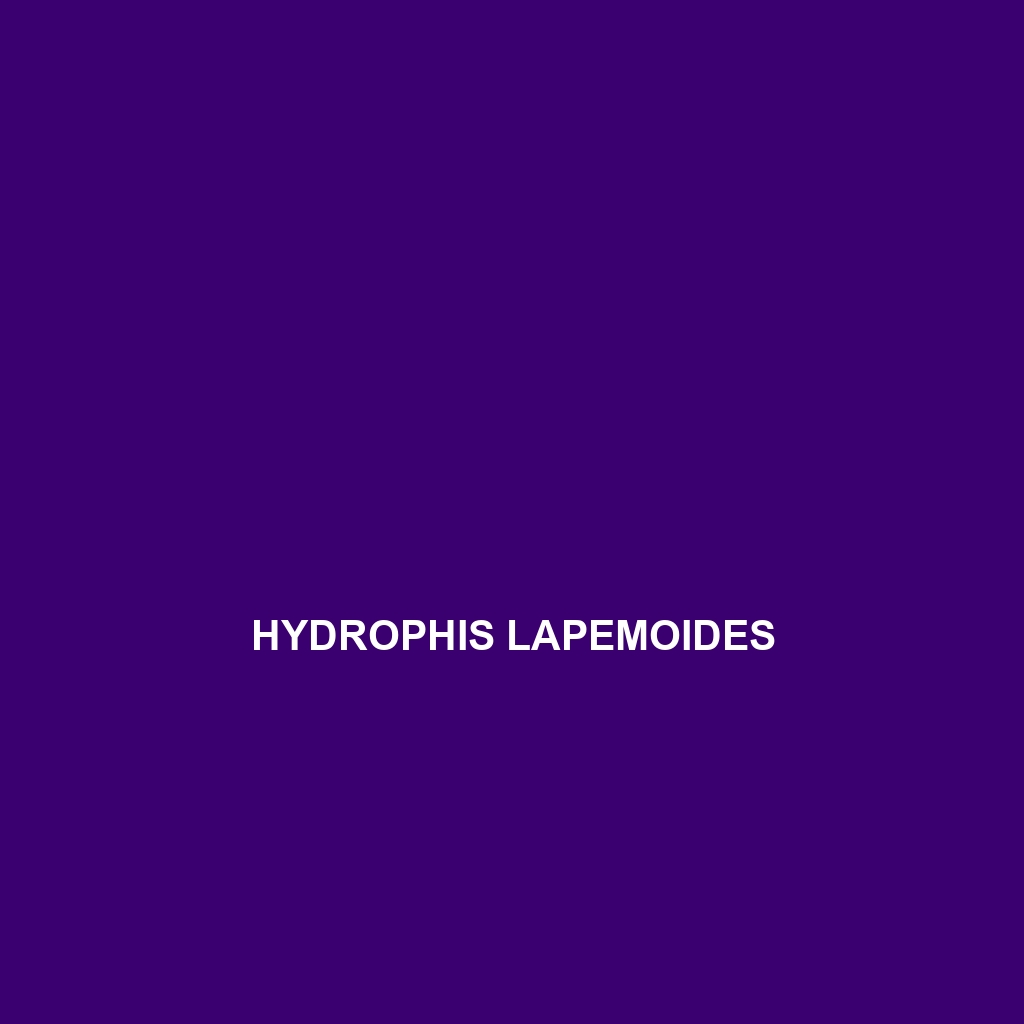Common Name
Hydrophis lamberti
Scientific Name
Hydrophis lamberti
Habitat
Hydrophis lamberti, commonly known as Lambert’s sea snake, primarily inhabits marine environments along the coastal regions of the Indo-Pacific Ocean. This species is most frequently found in shallow waters, especially near reefs and estuaries, where it thrives in a variety of aquatic landscapes including coral reefs and sandy sea beds. These habitats provide ample opportunities for hunting and breeding. The tropical and subtropical climates of regions such as Southeast Asia and northern Australia are ideal for the Lambert’s sea snake, which prefers warmer water temperatures. The presence of seagrass beds within these marine habitats further supports the biodiversity and ecological balance necessary for the species’ survival.
Physical Characteristics
Hydrophis lamberti is characterized by its elongated, streamlined body, adapting well for aquatic life. Adult Lambert’s sea snakes can reach lengths of up to 1.5 meters (about 5 feet), though individuals can occasionally grow larger. They possess distinctively flattened bodies that facilitate swimming, and their tails are paddle-shaped, enhancing propulsion in water. The coloration of Hydrophis lamberti is typically a striking pattern of bluish-grey or bluish-green, adorned with pale yellow or white bands, which provides camouflage against the ocean floor. Their heads are slightly triangular, and they possess small, pointed teeth ideal for grasping slippery prey.
Behavior
Behaviorally, Hydrophis lamberti is predominantly nocturnal, engaging in hunting activities during the night when they are most active. This adaptation helps them evade predators while exploiting the hunting opportunities presented by the darkness. During the day, they often rest among rocks or seagrass beds to conserve energy. Socially, these sea snakes are generally solitary creatures, although they may be observed in small groups that gather in abundant feeding areas. Mating rituals typically occur during the warmer months, when males can often be seen competing for the attention of females, displaying intricate swimming patterns and body posturing to showcase their fitness.
Diet
Hydrophis lamberti is primarily a carnivore, with a diet that includes a variety of fish and eels. They have adapted to consuming small fish species, which they ambush using their excellent swimming capabilities and keen eyesight. Their feeding patterns usually involve using a specialized feeding technique where they strike swiftly to capture prey. As proficient hunters, Lambert’s sea snakes have also been known to consume small crustaceans, adding variety to their diet, especially in environments where fish populations fluctuate.
Reproduction
The reproductive cycle of Hydrophis lamberti is quite fascinating. This species is ovoviviparous, meaning that females give birth to live young rather than laying eggs. Mating typically occurs in the summer months, with a gestation period lasting approximately six months. Females can produce a litter of around 4 to 10 offspring, which are fully developed and capable of swimming away shortly after birth. Parental care is not extended to the young, as they must quickly learn to fend for themselves in their marine environment. Mating displays involve males showcasing their physical prowess through swimming maneuvers that may attract females.
Conservation Status
The conservation status of Hydrophis lamberti is currently classified as “Least Concern” according to the IUCN Red List. However, despite this classification, the species faces threats primarily due to habitat degradation resulting from coastal development, pollution, and overfishing in their natural habitats. Conservation efforts focused on marine protection and habitat restoration are crucial to ensure the long-term survival of this beautiful sea snake. Increased awareness and regulation of fishing practices can also aid in mitigating threats to Lambert’s sea snake populations.
Interesting Facts
Hydrophis lamberti has several unique traits that make it an interesting species in marine ecosystems. Notably, it possesses a flat body and specialized lungs that allow it to remain underwater for extended periods while hunting. These snakes also have a remarkable ability to tolerate saline environments, thanks to specialized glands that help them excrete excess salt. Additionally, Lambert’s sea snake has a relatively low rate of aggression towards humans, making encounters less dangerous compared to other snake species.
Role in Ecosystem
Hydrophis lamberti plays a vital ecological role as both a predator and prey within its marine habitat. By controlling the population of small fish and crustaceans, Lambert’s sea snake helps maintain a balanced ecosystem, contributing to the biodiversity of reef environments. Additionally, as a prey species, it serves as a food source for larger marine animals, including birds and larger fish. The presence of Hydrophis lamberti in its habitat indicates a healthy environment, making it an essential component of the marine food web and ecosystem health.
